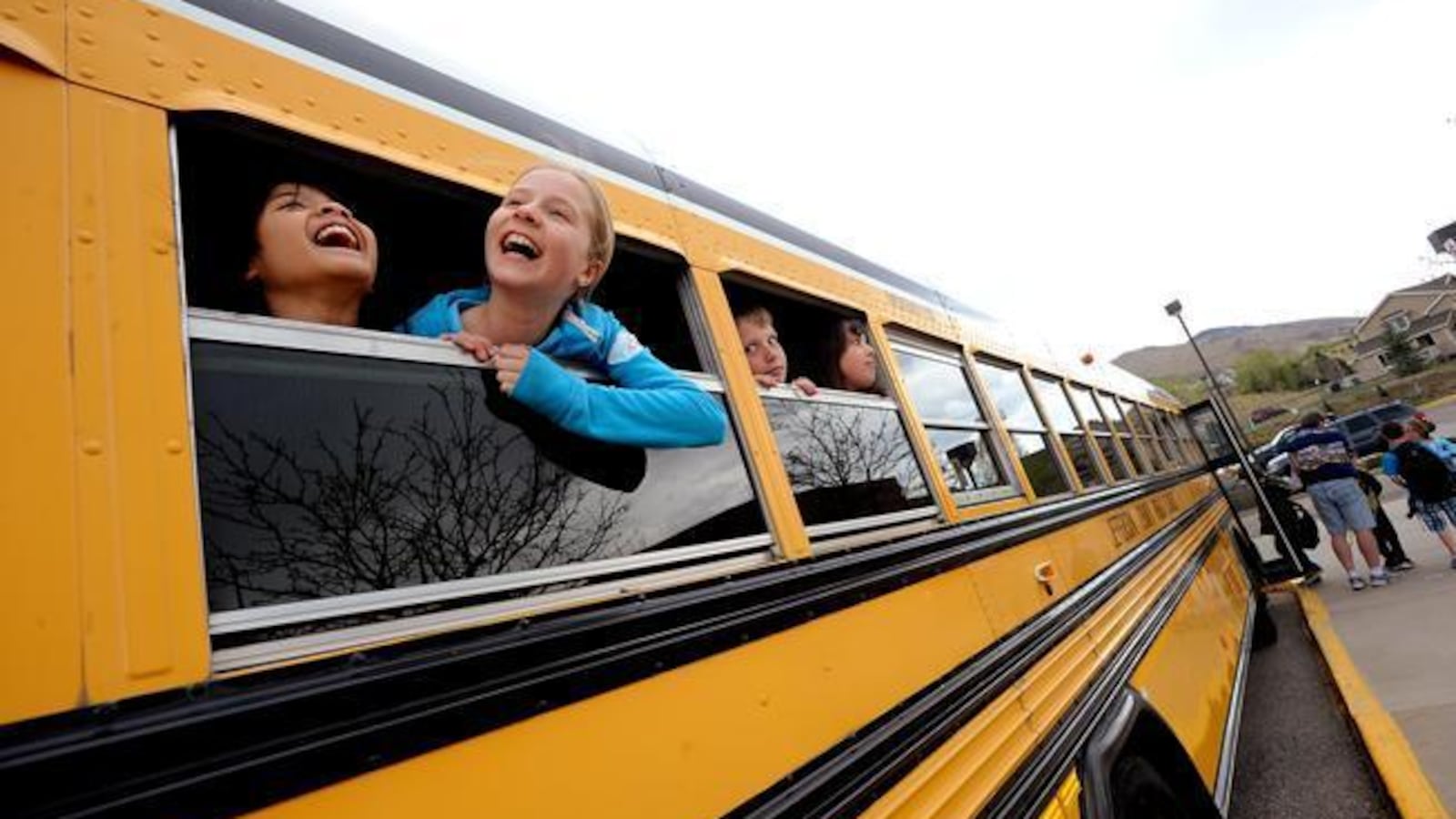More Colorado students use school choice to opt into traditional district-run schools than use it to attend charter schools. Those who do so are more likely to be white and middle- or upper-class than their peers. And transportation continues to be a barrier for students who want to go somewhere other than their neighborhood school.
Those are the findings of a report on choice and open enrollment in the traditional public school sector put out by Ready Colorado, a conservative education reform advocacy group that supports greater access to school choice.
The report, “Open Doors, Open Districts,” looked at the roughly 49,800 Colorado students who attended school in a district other than the one in which they resided during the 2016-17 school year and another 95,600 who used school choice within the 12 largest districts in the state. Together, these 145,400 students make up roughly 16 percent of all Colorado students. Another 13 percent of state students attend charter schools.
Since 1990, the School Choice Act has allowed students to enroll in any public school they want, without paying tuition, provided there is room — and that the school provides the services that student needs, a sticking point for many students who require special education services.
The number of students using this system to attend school in another district increased 58 percent over 10 years to 49,800 in 2016. Roughly 6,000 of those students attend multi-district online schools.
The students taking advantage of inter-district open enrollment are more likely to be white than Colorado students as a whole — 58 percent are white compared with 54 percent of all students. They’re also less likely to come from low-income families (36 percent, compared with 42 percent of all students), to speak a language other than English at home (8 percent compared with 14 percent statewide), or to have a disability (8 percent compared with 11 percent).
“It is important to understand these differences so that policy leaders and educators can work to ensure that open enrollment opportunities are more accessible for all Colorado families,” the report said. “The underrepresentation of Hispanic/Latino students and English learners suggests there may be some unmet needs in Spanish-speaking communities around inter-district choice — either in information, accessibility, or appropriate services for students.”
The report highlights two major barriers to more students using school choice.
Most districts don’t have the kind of common enrollment system that Denver pioneered or that Jeffco is rolling out each year. Most districts require parents to turn in paperwork at a particular school. Not only do districts not share the same deadlines as each other, often different schools in the same district have different deadlines.
The other is transportation.
“Time spent driving students to school can conflict with work schedules for parents, and public transit options can be scarce in many areas, making open enrollment functionally impossible for families without a transportation solution,” the report said. In one rural district, a group of parents banded together and hired their own school bus to take students to another district.
A bill sponsored last year by state Sen. Owen Hill, a Colorado Springs Republican, would have addressed both issues, encouraging the creation of more consistent deadlines across the state and allowing districts to cross boundaries to provide transportation. That bill was defeated in the Democratic-controlled House after some school districts said it would set the stage for larger, wealthier districts to poach students.
The transportation provision was later added to an unrelated bill in the final days of the session, a move that led to a lawsuit in which a judicial decision is pending.
Democrats now control both chambers of the Colorado General Assembly, and it’s not clear how any attempts to expand school choice would fare. Both school choice and charter schools have enjoyed bipartisan but not universal support in Colorado.
By highlighting the prominence of traditional public schools in how Colorado students use the choice system, advocates hope to separate choice and the popular idea that parents should be able to find the school that best meets their child’s needs from the more divisive debate about charter schools, which critics see as siphoning scarce dollars from other schools while not serving all students.
The report recommends developing more consistency between and within districts, providing more information to parents, and removing barriers to transportation.
Districts with higher ratings, which are determined primarily by results on standardized tests, tend to get more students than those with lower ratings, but some districts, particularly in the Denver metro area, send and receive large numbers of students, reflecting that parents and students are making decisions at the school rather than at the district level.
Metro area districts that have struggled to raise student achievement are losing large numbers of students to other districts. A quarter of students who live in Adams 14, whose low test scores prompted a state order for external management, attended school in neighboring districts in 2016. In Westminster, which just came off a state watchlist for low-performing schools this year, that number was 29 percent.
Ready Colorado found no clear relationship between districts that spent more per student and districts that attracted more students — but districts with higher enrollment get more money from the state for each student, creating incentives to compete for students.
Read the full report here.

